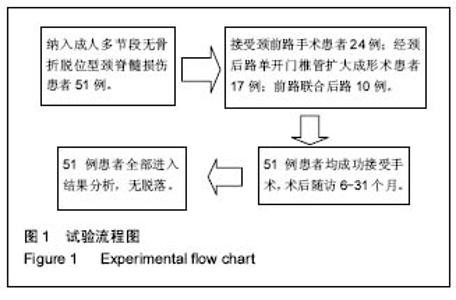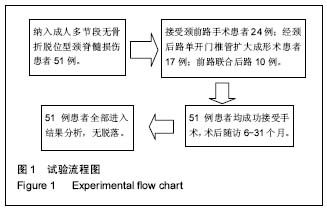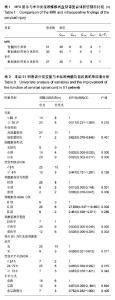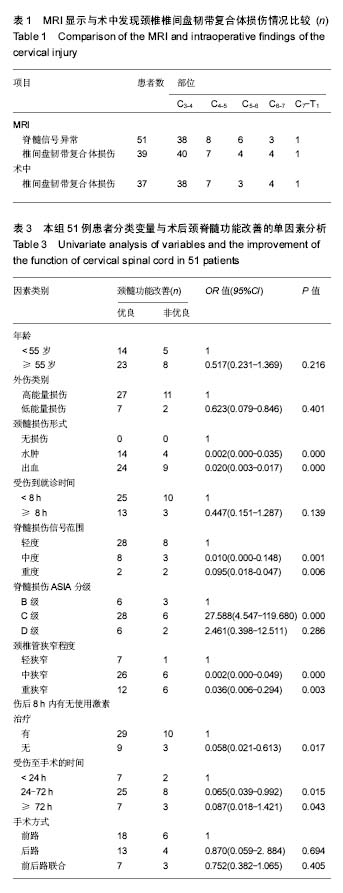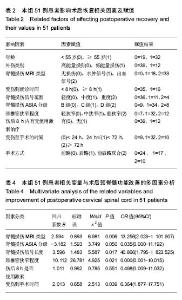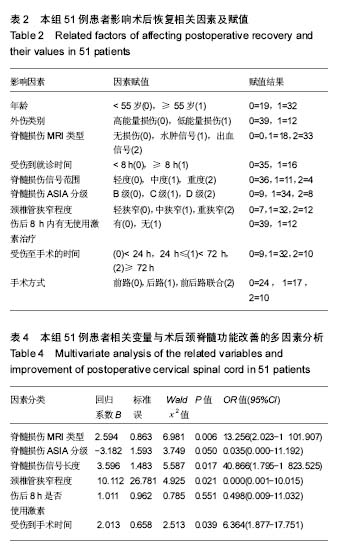| [1] Rozzelle CJ,Aarabi B,Dhall SS,et al.Spinal cord injury without radiographic abnormality(SCIWORA).Neurosurgery. 2013; 72(Suppl 2):227-233.[2] 钟招明,江健明,王吉星,等. 成人无骨折脱位型颈脊髓损伤的手术治疗[J]. 创伤外科杂志,2012,14(1):19-23.[3] 王晓明,陈丽娟,贾永庚,等.无骨折脱位型颈髓损伤MRI表现和损伤部位表现弥散系数与损伤程度的相关性[J]. 中国康复理论与实践,2015,21(4):394-396.[4] 朱文刚,吴强,席新华,等.无骨折脱位颈髓损伤的MRI分型及其临床意义[J]. 中国矫形外科杂志,2012,20(24):2284-2287.[5] 王少波,蔡钦林,党耕町,等.无骨折脱位颈椎外伤合并颈脊髓损伤的MRI表现及其临床意义[J]. 中国矫形外科杂志,2000,7(6):531-551.[6] 金根洋,陈伟南,骆宇春,等.颈椎过伸性损伤患者椎间盘韧带复合体损伤的影像特点及其临床意义[J].中国脊柱脊髓杂志, 2012, 22(11):1016-1021.[7] Pang D,Wilberger JE Jr. Spinal cord injury without radiographic abnormalities in children. J Neurosrug. 1982;57(1):114-129.[8] 于铁强,左玉明,王月光,等.成人无骨折脱位型脊髓损伤住院患者流行病学分析[J].中国骨与关节损伤杂志,2014,29(5):488-489.[9] 党耕町,孙宇,刘忠军.无骨折脱位型颈脊髓损伤及外科治疗[J]. 中国脊柱脊髓杂志,2003,13(10):581-582.[10] 朱庆三,赵东旭,李野,等.老年无骨折脱位型颈脊髓损伤的诊治和围手术期管理[J].脊柱外科杂志,2014(5):284-288. [11] 尹飞,朱灏宇,朱庆三,等.无骨折脱位型颈脊髓损伤的预后分析[J].中华创伤杂志,2014,30(2):100-102[12] 沈祥,徐宏光,赵泉来,等.无骨折脱位型颈脊髓损伤与颈椎退行性变影像学相关性研究[J].中华骨与关节损伤杂志,2015,8(3):214-217.[13] Miyanji F,Furlan JC,Aarabi B,et al.Acute cervical traumatic spinal cord injury :MR imaging findings correlated with neumlogic outcome-prospective study with 100 consecutive patients. Radiolohy. 2007;243(3G:820-827.[14] Zeitoun D,EI Hajj F, Sariali E, et al .Evaluation of spinal cord compression and hyperintense intramedullary lesions on T2-weighted sequences in patients with cervical spondylotic myelopathy using flexion-extension MRI protocol. Spine J. 2015;15(4):668-674.[15] 张亮,刘忠军,王静成,等.颈椎动力位MRI在无骨折脱位型脊髓损伤治疗方案选择中的价值[J]. 实用骨科杂志,2016,22(10):952-956.[16] Gupta SK, Rajeev K, Khosia VK, et al. Spinal cord injury without radiographic abnormality in adults. Spinal Cord. 1999;37(10):726-729. [17] 杨进顺,黄文铎,王胜标.无骨折脱位型颈髓损伤手术与非手术治疗疗效对比观察[J].中国创伤杂志,2004,20(6):510-512.[18] 孙宇,蔡钦林,王力舜,等.无骨折脱位型颈脊髓损伤外科治疗随诊观察[J].中国脊柱脊髓杂志,2002,12(2):90-92.[19] 李家顺,贾连顺,颈椎外科学[M].上海:上海科学技术出版社, 2004:263.[20] 高明勇,陶海鹰,卫爱林,等.急性成人颈段 无骨折脱位型脊髓损伤非手术治疗与早期外科干预的对比分析[J].中国骨与关节损伤杂志,2015,30(1):7-10.[21] 顾勇杰,胡勇,徐荣明,等.无骨折脱位型颈脊髓损伤早期手术的临床疗效[J].脊柱外科杂志,2009,7(5):286-288.[22] Guest J,Eleraky MA,Apostolides PJ,et al Traumatic central cord syndrome:results of surgical management. J Neurosurg. 2002;97(1S):25-32.[23] 杨建东,冯新民,蒋百川,等.颈脊髓损伤后外科干预时机的选择[J]. 中国骨与关节损伤杂志,2010,25(5):388-390.[24] 朱辉,封亚平,刘艳生,等.脊髓损伤再起手术及康复训练的疗效分析[J]. 中华神经外科疾病研究杂志,2011,10(5):408-412.[25] Luo B,Feng H,Yang X,et al.Analysis of Instability Factors for the Cervical Stenosis with Cervical Spinal Cord Injury without Fracture and Dislocation. J Pract Orthop. 2015. [26] 夏新雷,吕飞舟,姜建元,等.无骨折脱位型颈脊髓损伤手术疗效和预后的影响因素[J].上海医学,2014,37(10):868-871.[27] 马晓生,姜建元,吕飞舟,等.无骨折脱位型颈脊髓中央损伤综合征手术疗效及其影响因素[J].中国脊柱脊髓杂志,2015,25(4):298-303.[28] Pang D.Spinal cord injury without radiographic abnormality in children, 2 decades later. Neurosrugery. 2004;55(6):1325-1343.[29] Bracken MB, Shepard MJ.Collins WF,et al.A randomized, controlled trial of methylrednisolone or naloxone in the treatment of acute spinal-cord injury:results of the Second National Acute Spinal Cord Injury Study. N Engl J Med. 1990;512(20):1405-1411.[30] 孙天胜,胥少汀. 大剂量甲基强的松龙治疗颈椎无骨折脱位型脊髓损伤的临床研究[J]. 中华外科杂志,1997,35(12):735-737.[31] Velstra IM, Bolliger M, Tanadini LG, et al.Prediction and stratification of upper limb function and self-care in acute cervical spinal cord injury with the graded redefined assessment of strength,sensibility,and prehension(GRASSP).Neurorehabil Neural Repair. 2014;25(7):632-642. |
